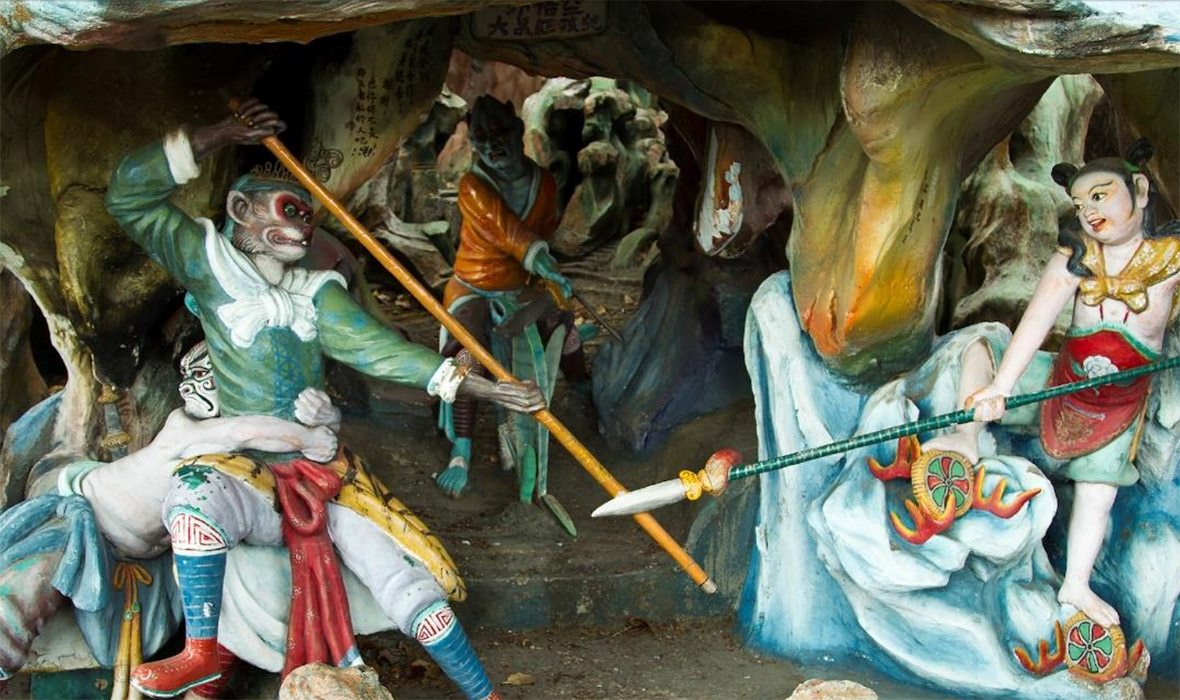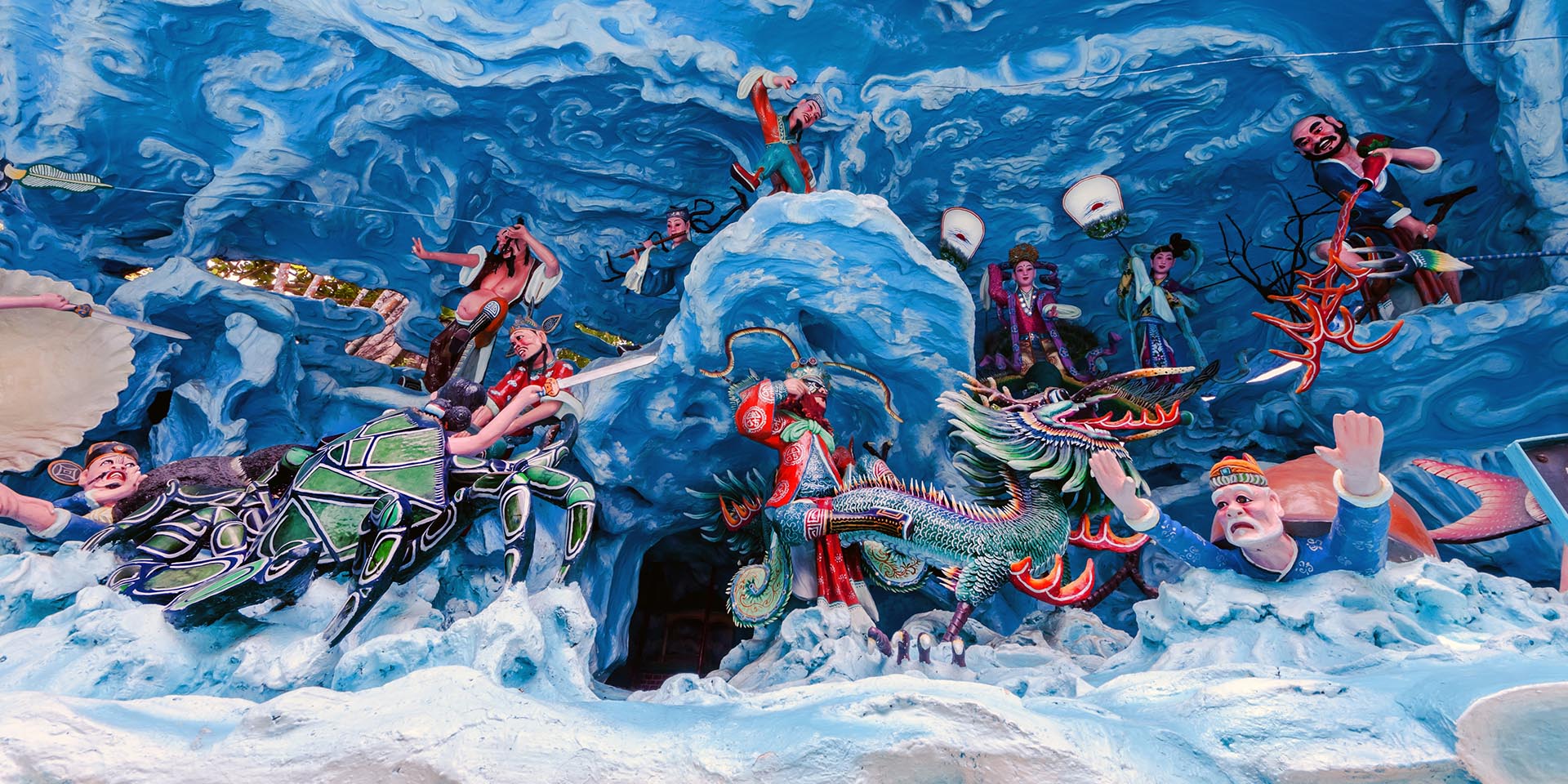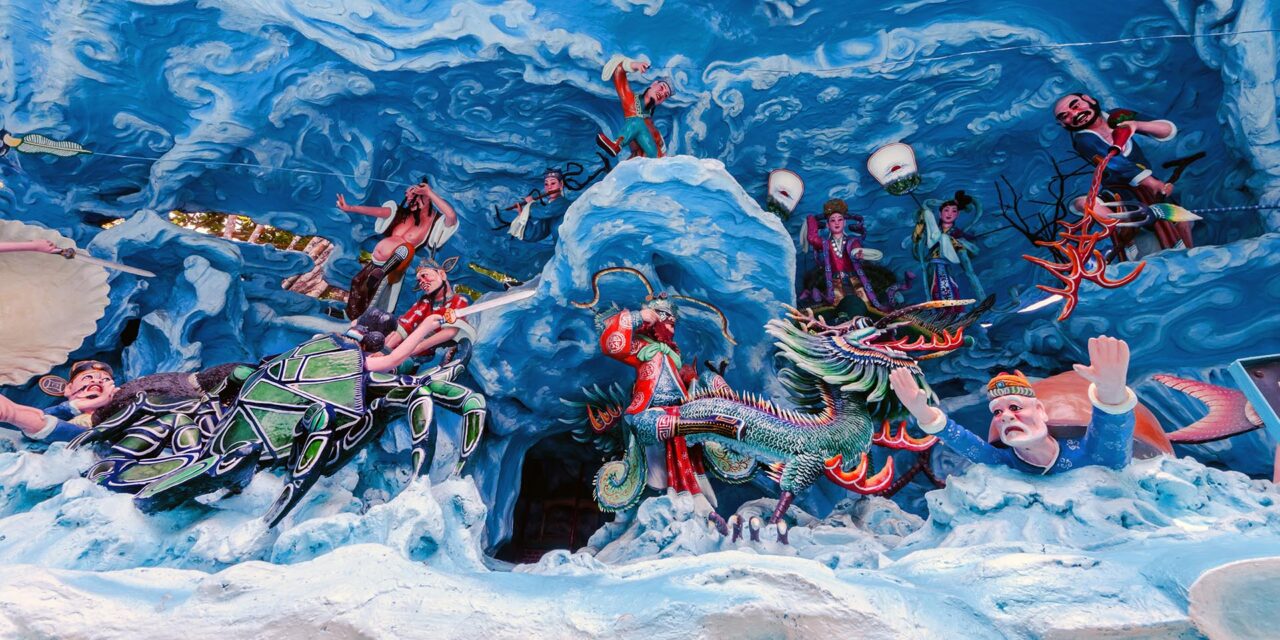WRITTEN BY
Travelogues
PUBLISHED
September 20, 2017
LOCATION
Singapore
Damned souls, demons, and eternal torture – all found just north of southern Singapore’s West Coast Highway Viaduct. Travelers in town for the Grand Prix looking for one of the Lion City’s stranger sights, will want to head in the direction of Haw Par Villa.
The 10 Courts of Hell – a must-see for the more macabre Singapore traveler – and its kitschy dioramas are a bit of an oddity amongst the glass buildings and clean civility of Singapore. There is, however, much more to see.

ABOVE: A scene of sinners being dragged through a tortuous afterlife in the 10 Courts of Hell
“Some visitors do come just for the 10 Courts of Hell, and we do not think they go away disappointed,” says Mr. Eisen Teo, senior researcher with the Singapore History Consultants. “With more than 1,000 sculptures and dioramas in the park, Haw Par Villa is Singapore’s largest outdoor art gallery.”

ABOVE: The 10 Courts of Hell hall at Haw Par Villa.
First, it should be understood that there are dioramas of Hell in Singapore because of Tiger Balm – yes, that Tiger Balm. “The cultural park was founded in 1937 by successful entrepreneur and businessman Aw Boon Haw, a Rangoon-born ethnic Chinese,” Eisen Teo tells Travelogues, referring to the man behind the Tiger Balm brand. “Aw Boon Haw built the garden, and a villa in the middle of the garden, for his younger brother, Aw Boon Par.”

ABOVE: Haw Par Villa began as an act of brotherly love from Aw Boon Haw of Tiger Balm fame.
Besides brotherly love, the space was curated to provide a space designed for an Asian community – rather than the Europeans – and also functioned as marketing tool for the Tiger Balm Brand. The area would come to be known as Haw Par Villa and the Tiger Balm Garden.
After the WWII however, the villa was badly damaged and would remain so until Aw Boon Par’s death.

ABOVE: The 10 Courts of Hell, a small part of Haw Par Villa, were built in the final years of Aw Boon Haw’s life.
“In the last nine years of Aw Boon Haw’s life, from 1946 to the time he died in 1954, he spent every morning in the cultural park, working with artisans and contractors to build, rebuild and tear down sculptures and dioramas,” says Eisen Teo. “During this period, many sculptures and dioramas teaching moral values and showing the consequences of doing good and evil, such as the Virtues & Vices diorama, and the 10 Courts of Hell, were built.”
No one is quite sure why Aw Boon Haw ordered these structures built, perhaps leaving moral lessons for the community. “Hence, we strongly believe Haw Par Villa cannot be equated to just ‘Hell and morality’ or ‘torture and damnation.’”

ABOVE: Liu Bei, Guan Yu, and Zhang Fei’s peach tree oath, a scene from one of China’s greatest works of literature, Romance of the Three Kingdoms.
Indeed, compared to the other features of the park, the hell/vice-related features make up only part. There are many other elements of Chinese culture as well, including the Four Classic Chinese novels – including the peach tree oath and of course everyone’s favorite immortal simian from Journey to the West.

ABOVE: The Monkey King from Journey to the West doing battle in Haw Par Villa.
Also, the park isn’t just Chinese culture; there are sumo wrestlers, marsupials, and even a Statue of Liberty.
Yes, Hell seems a bit morbid, but there, too, are the Eight Immortals and Buddhas. To get the proper Haw Par Villa experience, guests are treated to a tour once a week for the 2.5-hour Cultured Leopard, Rising Tiger tour. “They will go away with a much deeper understanding of the cultures, philosophies, and religions behind major sculptures and dioramas in the park,” says Teo.

ABOVE: One of the many large mask sculptures found throughout Haw Par Villa.
“They understand the significance of the interaction between the great ancient civilizations of China and India. They realize that Haw Par Villa is not just a place one takes his or her kids to scare them into doing good and renouncing bad behavior,” Eisen Teo says. “They realize that Haw Par Villa is a great place to learn about art, culture, Eastern philosophies, and religions, Asian entrepreneurship, and simply enjoy the colorful story of Aw Boon Haw and Aw Boon Par’s lives.”


